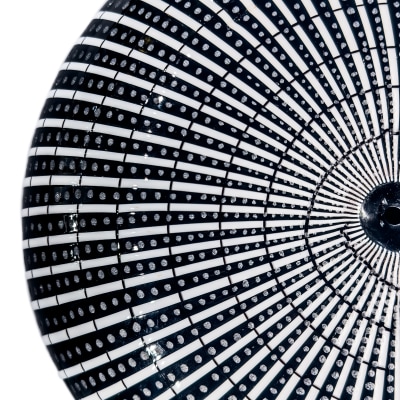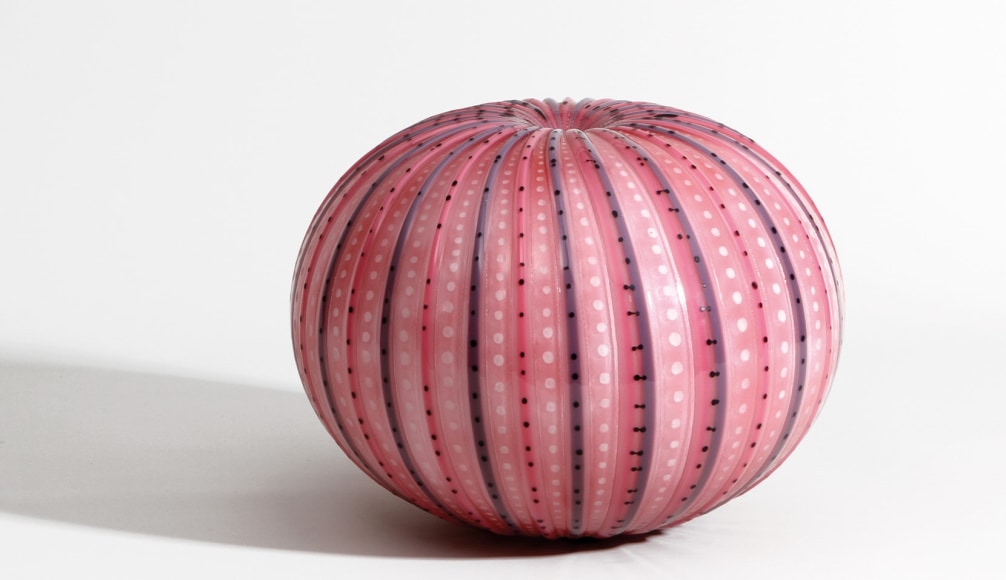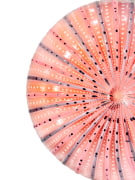
A French Contemporary Art Glass "Pink Oursins" (Sea Urchin) vase by, French Glass Master Michel Détré. The vase in the form of a sea urchin is hand blown and finished and further wheel carved. The vase predominately finished in Pink is further accunetuated with pink and purple ribbing and further wheel carved and with black spots throughout. The vase is signed, "Michel Détré de Soire"
Measurements:
height: 7.5 in. x diameter: 10.5 in.
Notes:
Michel Détré recently had us blow some pieces with simple, refined shapes. These are unique pieces made freehand, that is, without a mold. These vases are the raw material, the basis of the work, on which he can freely indulge in his favorite technique: wheelwork. Michel Détré, patiently and for a long time, covers the surface of the vases with small incisions to create patterns and rhythms, and to transform them into precious stones, unique pebbles, and mysterious sea urchins. The artist, encouraged by his friends and his gallery owner, perfected this technique to the point where a new series was born: The Filigree "Sea Urchins." This series is an exciting challenge for us glassmakers. Michel Détré wants the relief of the pieces not only to be provided by his engravings, but also to be rough-hewn while hot. To achieve this, we use the Venetian filigree technique. Filigrees are colored glass rods traditionally used to decorate pieces. To make a filigree piece, glass rods are first drawn, colored on the inside and covered with colorless glass (filigree "a fili"). These rods are then used to make more complex filigrees (ballotini, zanfirico, reticello, etc.)
Here, the basic technique was diverted to achieve the desired effect. While traditionally, the filigrees are melted into the mass of glass, here, the challenge is to keep them on the surface without melting them, in order to preserve all the relief. This complicates the blowing of the piece because the relief prevents the vase from being shaped in the traditional way. Similarly, to avoid melting the filigrees, it is necessary to be very vigilant during the glass heating phases and to work as "cold" as possible. A certain number of pieces are broken, discarded, in particular because of the large number of wires desired by Michel Détré: the wires are in fact closely spaced. They can thus touch each other during blowing and remain stuck to each other. An additional refinement, small black spots on the white filigrees: they are obtained by stretching a bead of black glass around the piece. The bead only sticks to the wires that remain in relief. The piece is then reheated and turned quickly. The thread melts, and the parts of the cord suspended between two filigrees come loose and fall into the furnace.






